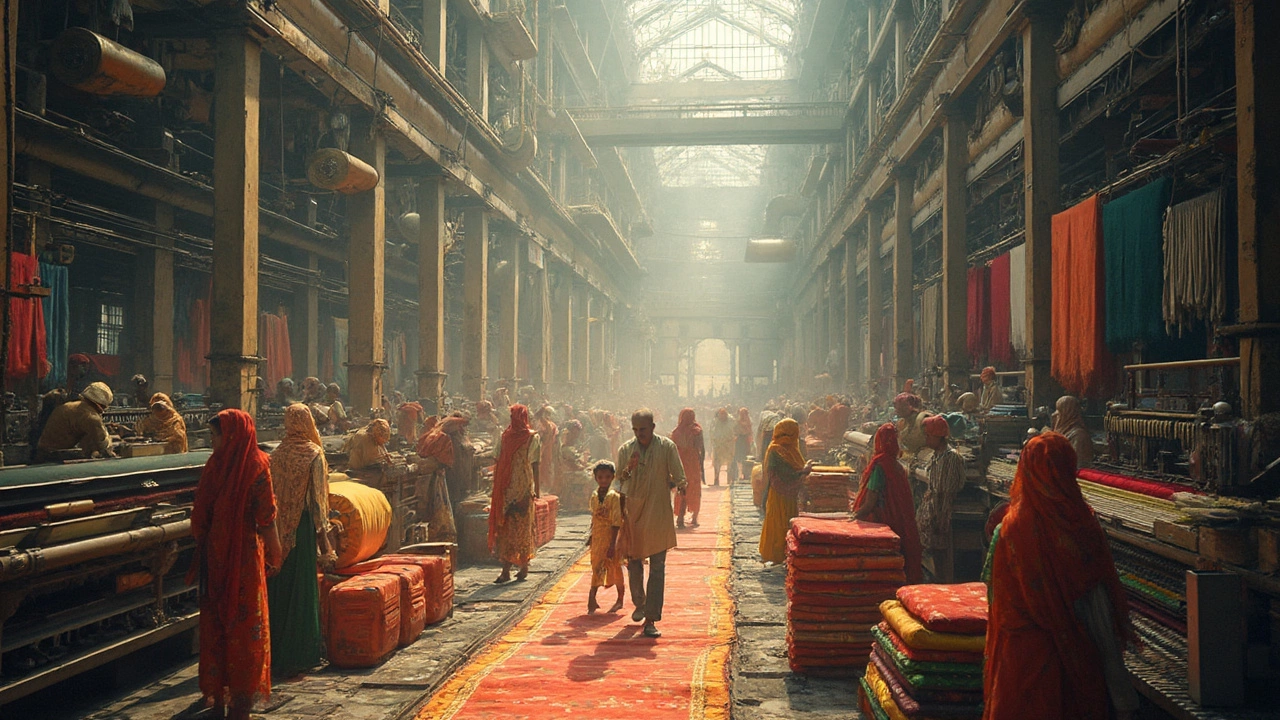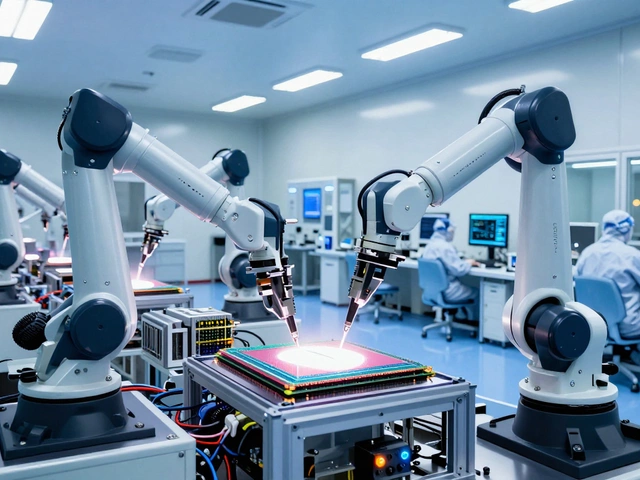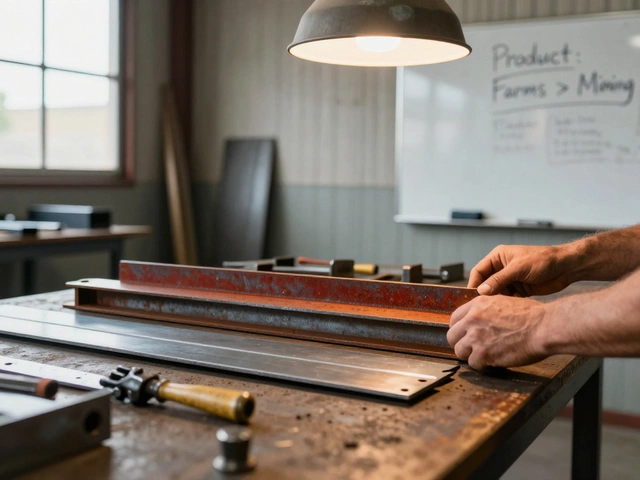Richest Textile Company in the World: Examining the Leaders from India and Beyond

Big name brands and billion-dollar factories usually steal the spotlight in the textile world, but have you ever wondered who's really got the largest stash? When it comes to cold, hard numbers, LVMH—yes, the French luxury giant Louis Vuitton Moët Hennessy—sits comfortably as the wealthiest textile company out there. In 2024, LVMH crossed over $90 billion in annual revenue, making most regional textile players look tiny by comparison. Think about it: apart from their plush bags and shoes, they own factories, raw materials, and a supply chain running like a Swiss watch.
But that's not the end of the story. Indian textile companies are playing catch-up and are no small fish—Reliance Industries, Arvind Limited, and Welspun India pull in billions and spin yarn (literally) for the biggest fashion brands worldwide. While nobody from India knocks LVMH off the throne (yet), these firms are pushing boundaries, investing in smart machinery, eco-friendly processes, and global distribution channels. If you’re dreaming about a textile empire, these are names you need on your radar.
- Who Holds the Textile Crown?
- India’s Top Players: How Close Are They?
- What Fuels the Leaders’ Success?
- Tips from the World's Textile Giants
Who Holds the Textile Crown?
So, if you're searching for the richest textile company in the world, all eyes turn to LVMH. That's the group behind Louis Vuitton, Dior, Fendi, and a handful of other brands you spot in expensive malls or on celebrities. In 2024, LVMH's revenue shot past $90 billion, with a lot of that money coming from textiles and luxury goods. Their edge isn’t just in fashion—it’s the entire supply chain, from fancy fabrics to the finished high-ticket products. No other textile manufacturing company—Indian or global—comes close to these numbers right now.
Here’s a quick comparison of the world’s wealthiest textile players based on latest reported annual sales:
| Company | Country | 2024 Revenue (USD) |
|---|---|---|
| LVMH | France | $90B+ |
| Inditex (Zara) | Spain | $37B |
| Reliance Industries (Textile division) | India | $7B |
| Arvind Limited | India | $1.2B |
While India leads in scale on some fronts—think raw cotton and yarn exports—none of its textile manufacturers match LVMH’s cash power. LVMH sets the pace with money, reach, and a mix of fashion and vertical integration most can’t touch. But don’t write off the Indian giants: they’re moving fast, upgrading factories, and eyeing a bigger global footprint. For now though, the richest textile company? LVMH takes the crown, hands down.
India’s Top Players: How Close Are They?
When you look at the richest textile company on a global scale, the gap between India’s giants and LVMH is pretty clear. But don’t underestimate the muscle Indian textile manufacturing companies bring to the table. These firms play a huge role in supplying fabrics and finished products to the world—often powering the brands you see on the shelves in Europe, the US, and beyond.
Reliance Industries wears the crown among Indian players. That's mostly thanks to their massive polyester and yarn production. In the 2024 financial year, Reliance’s petrochemicals and fibers branches clocked in billions in revenue—an engine for exports and local supply both. Then there's Arvind Limited, a household name if you’ve worn jeans lately. Arvind's denim mills churn out fabric for major brands like Levi’s, and they’re also expanding into high-tech textiles and sustainable processes. Welspun India isn't far behind either, famous for their towels and home textiles. If you’ve ever checked into a big hotel chain, chances are you’ve used their products.
| Company | 2024 Revenue (USD) | Major Products |
|---|---|---|
| Reliance Industries (Textiles Division) | $6.5 Billion | Polyester, fibers, yarn |
| Arvind Limited | $1.25 Billion | Denim, woven, knits |
| Welspun India | $1.1 Billion | Home textiles |
Now, if you stack their numbers against LVMH’s $90+ billion revenue, it sounds like a massive gap. But here’s the twist—these Indian companies aren’t about luxury or flashy branding. They build their fortunes on sheer volume, razor-thin margins, and smart manufacturing. While they’re not the world’s richest textile company yet, their global reach and influence in textile manufacturing can’t be ignored. Growth in technical, organic, and recycled textiles is putting Indian companies in a strong spot for the future.

What Fuels the Leaders’ Success?
Ever wonder what sets the richest textile company apart from the rest? Let’s break down the real drivers behind their jaw-dropping numbers and global influence.
The most successful players like LVMH and top Indian names such as Reliance Industries don’t just have deep pockets—they’ve built world-class supply chains. LVMH, for example, controls almost every step from raw fiber to finished luxury goods. This isn’t just about bragging rights; it lets them maintain quality, squeeze costs, and react fast to market trends.
Technology is a massive factor. Indian leaders like Welspun and Arvind Limited invest heavily in automation and AI-powered textile machines. That means higher output, less waste, and products rolling out faster than ever. A report from McKinsey found that “automation can cut costs by up to 30% for textile manufacturers embracing digital tools.” Here’s what this looks like in real life:
- Smart sensors track fabric defects instantly, so they catch errors early.
- Robots handle dangerous or repetitive tasks, boosting safety and speed.
- Data software predicts demand, so companies don’t overproduce or miss orders.
Brand power can’t be ignored either. LVMH’s luxury reputation lets them charge sky-high prices—people pay for the name as much as the item itself. Indian manufacturers, meanwhile, focus on building trust with global clothing brands by delivering on time and meeting tough environmental rules.
| Company | Annual Revenue (2024) | Major Strength |
|---|---|---|
| LVMH | $90B+ | Brand value, full supply chain control |
| Reliance Industries (Textile Division) | $5B+ | Vertical integration, scale |
| Arvind Limited | $1.2B | Innovation, sustainability |
Here’s a quote that pretty much sums it up:
“The most valuable textile companies win not because they’re big, but because they’re smart, responsive, and trusted in every market they serve.” – Business Standard, March 2024
Bottom line? If you want to break into the big league, focus on top-notch quality, up-to-date tech, and earning your customers’ trust. That’s what keeps the real leaders on top year after year.
Tips from the World's Textile Giants
If you look at what the richest textile companies are doing, you’ll notice a few simple patterns—no magic tricks, just smart moves. LVMH, for example, dominates by controlling its supply chain from raw material to retail rack. That’s not just about fancy handbags—owning the process means keeping quality tight, costs lean, and speed high.
Check what sets them apart:
- Invest in Tech: Even old-school textile companies are dropping big money on automation and AI. LVMH’s factories use sensors to spot flaws and speed up production. Reliance Industries fitted their spinning mills with tech that cuts down waste and improves fiber consistency. Smart factories mean fewer mistakes and more profit.
- Sustainability Sells: Welspun India set up water recycling plants that cut their water use by up to 40%. Why? Big buyers now demand eco-friendly products. If you want contracts with Adidas, IKEA, or H&M, you need real green credentials, not just a nice slogan.
- Global Reach, Local Roots: The biggest leaders don’t just export—they also adapt for each market. For example, Arvind Limited produces special denim for Europe and a totally different type for Japan. Customizing products for each region makes their brands stick in every corner of the world.
- Use Your Brand: LVMH isn’t just selling textiles—they’re selling a lifestyle. They build hype with smart branding, exclusive product drops, and collaborations with influencers. Even in textiles, brand value can drive up prices faster than raw material costs.
Here’s a quick look at some numbers, just to show what these leaders are playing with:
| Company | Annual Revenue (USD) | Key Strength |
|---|---|---|
| LVMH | $90+ billion | Luxury branding & supply chain control |
| Reliance Industries (Textiles) | $7.2 billion | Scale & integration |
| Arvind Limited | $1.3 billion | Innovation in denim & global reach |
| Welspun India | $1.1 billion | Sustainability & home textiles |
One thing the pros agree on: Don’t ignore your people. In the words of Jean Arnault of LVMH,
“The best technology and machinery are nothing without skilled hands and motivated teams.”
The big takeaway? If you want your place among the world's richest textile players—or even just to build a solid business—you’ve got to marry technology and tradition and never lose focus on quality. Start small, think big, keep learning, and always stay plugged into what top companies are doing. That’s the real fabric of success.





